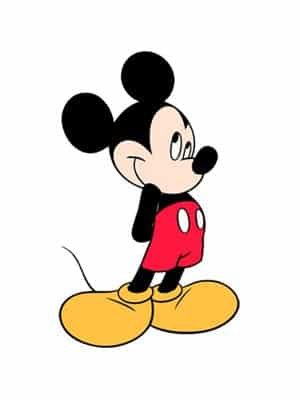Cartoon Character: The Ultimate Guide to Creating Iconic Figures

Cartoon characters are a beloved part of many childhoods. They bring joy, laughter, and sometimes even teach valuable lessons.
From the classic heroes to the mischievous villains, cartoon characters have left a lasting mark on popular culture. These animated figures can inspire imagination and creativity in both kids and adults. Whether it’s the charming Mickey Mouse or the adventurous SpongeBob SquarePants, each character has a unique story and personality.
In this blog post, we will explore what makes cartoon characters so special, their impact on society, and why they continue to be cherished by generations. Get ready to dive into the colorful and whimsical world of cartoons, where every character has something fun and interesting to offer.
Introduction To Cartoon Characters
Cartoon characters have charmed audiences for decades. They bring stories to life. These characters are often colorful and exaggerated. They make us laugh, cry, and think.
From Mickey Mouse to SpongeBob SquarePants, they become part of our daily lives. They live in our hearts and minds. But what makes some characters stand out more than others?
What Makes A Character Iconic
Several factors contribute to a character’s iconic status. A unique design is crucial. Bold colors and distinct shapes are memorable. A strong personality also matters. Characters with clear traits are more relatable.
Catchphrases can make a big difference. Think of Bart Simpson’s “Ay caramba!” or Scooby-Doo’s “Ruh-roh.” These phrases stick with us. Another factor is the voice. A unique voice can set a character apart. Consider Bugs Bunny’s Brooklyn accent or Mickey Mouse’s high-pitched tone.
Importance In Pop Culture
Cartoon characters play a huge role in pop culture. They influence fashion, language, and even behavior. Some characters become symbols of entire generations. They inspire merchandise, movies, and theme parks.
They also create a sense of nostalgia. Adults remember their favorite childhood characters fondly. This connection makes them more likely to introduce these characters to their children. Thus, the legacy continues. Cartoon characters are more than just drawings. They are cultural icons.
Conceptualizing Your Character
Creating a cartoon character involves several steps. The first step is to conceptualize your character. This involves finding inspiration and defining core traits. A well-thought-out concept ensures your character is memorable and relatable. Let’s break down the process.
Finding Inspiration
Inspiration can come from many sources. Look at everyday life, nature, and other characters. Observe people’s behaviors, animals’ movements, and the world around you. Keep a notebook or sketchpad handy. Capture ideas as they come. This helps you gather a pool of concepts to draw from.
- Observe people around you
- Study animals and their behavior
- Review existing characters for ideas
Defining Core Traits
Once you have inspiration, define your character’s core traits. These traits make your character unique. Think about the character’s personality, goals, and quirks. A well-rounded character has distinct traits that set them apart.
Here are some key aspects to consider:
| Trait | Description |
|---|---|
| Personality | Is the character kind, funny, or serious? |
| Appearance | What does the character look like? |
| Background | Where does the character come from? |
| Goals | What does the character want to achieve? |
Use these aspects to build a detailed character profile. The more details, the more depth your character will have.
- Define your character’s personality.
- Sketch your character’s appearance.
- Write a brief background story.
- State your character’s goals.
Combining these elements helps create a vivid and engaging character.
Designing The Visuals
Designing the visuals of a cartoon character is a crucial step. It defines the character’s identity and appeal. The visual design must be unique and engaging. It should capture the audience’s attention instantly. This section delves into the essential aspects of designing these visuals.
Choosing A Style
The style sets the tone for the entire character. It can be realistic or abstract. Each style has its own charm and audience. Realistic styles often appeal to older audiences. Abstract or exaggerated styles attract younger viewers. Consistency in style is key to maintaining character recognition.
Crafting Memorable Features
Memorable features make a character stand out. Big eyes, unique hair, or distinct clothing can be effective. These features help in creating a lasting impression. They should be simple yet striking. Overcomplicating the design can confuse the audience. Simple details often work best for memorability.
Developing Personality And Backstory
Cartoon characters are more than just drawings. They have personalities and backstories that make them unique. Developing these aspects brings the characters to life and makes them relatable. A well-crafted personality can define a character’s actions, while a compelling backstory explains their motivations and quirks.
Creating A Unique Voice
A character’s voice is a key part of their personality. It reflects their emotions, attitudes, and beliefs. Think about how your character speaks. Do they use formal language or slang? Are they loud or soft-spoken? A unique voice helps the audience connect with the character.
Consider the character’s background. Their upbringing and experiences shape how they communicate. A character from a wealthy family might speak differently than someone from a rural area. Use these details to give your character a distinct voice.
Building A Compelling History
A character’s history influences their present actions and decisions. Think about their past experiences. Did they face any challenges? Have they achieved significant milestones? These events shape their personality.
Include key moments in their life story. These can be happy times, like winning a prize, or sad times, like losing a loved one. These moments add depth to the character and make them more relatable.
Remember, a compelling history doesn’t have to be complex. Simple, meaningful events can create a strong connection with the audience. Focus on what makes your character unique and interesting.
Animating Your Character
Creating a cartoon character is a wonderful journey. The next step is to animate it. This makes your character come alive. Animating is both fun and challenging. It involves several techniques to ensure your character moves smoothly and looks natural.
Basic Animation Techniques
Learning basic animation techniques is essential. These techniques form the foundation of your character’s movements. Here are a few key points:
- Keyframes: These are specific frames that define the starting and ending points of any smooth transition.
- Tweening: This involves creating intermediate frames between two keyframes to give the appearance of motion.
- Squash and Stretch: This technique helps to exaggerate movements, adding a sense of flexibility and life to your character.
Each technique contributes to making your animation seamless and engaging.
Bringing Movements To Life
To bring movements to life, focus on the details. Here are some tips:
- Anticipation: Show a slight movement before the main action. This prepares the audience.
- Follow-through: Ensure parts of the character continue to move after the main action. This adds realism.
- Secondary Actions: Add smaller movements that complement the main action. For example, a character’s hair swaying while they walk.
These details make your character’s movements look natural and dynamic.
| Technique | Description | Example |
|---|---|---|
| Keyframes | Define starting and ending points of motion | Character jumps from the ground to the air |
| Tweening | Create intermediate frames | Smooth transition of a character’s hand wave |
| Squash and Stretch | Exaggerate movements for flexibility | Bouncing ball stretching and squashing |
Understanding these techniques and tips helps you create engaging animations. Your character will become more lively and captivating.

Credit: www.youtube.com
Voice Acting And Sound Design
Voice acting and sound design are crucial for bringing cartoon characters to life. The right voice can make a character memorable. Sound effects enhance the story, making the experience more immersive. Let’s explore how these elements work together.
Casting The Right Voice
Choosing the right voice actor is vital. The voice must match the character’s personality. A well-cast voice can convey emotions and nuances. This helps in creating a strong connection with the audience.
Here are some key aspects to consider:
- Voice quality: The tone and pitch must suit the character.
- Acting skills: The actor should bring the character to life with emotion.
- Versatility: Some actors can perform multiple voices.
A good voice actor can make a character unforgettable. They add depth and dimension to the role.
Adding Sound Effects
Sound effects play a crucial role in cartoons. They add realism and excitement. Each sound must match the action on screen. This helps the audience feel more involved.
Types of sound effects used in cartoons:
- Environmental sounds: These include wind, rain, and city noises.
- Character sounds: Footsteps, clothing rustles, and other personal sounds.
- Action sounds: Punches, crashes, and explosions.
Using sound effects effectively enhances the storytelling. It makes the animated world feel more real.
Voice acting and sound design are integral to the success of any cartoon. They help create a more engaging and immersive experience for the audience.
Marketing And Merchandising
Cartoon characters have a unique charm. They capture the hearts of audiences young and old. By using effective marketing and merchandising strategies, these characters can become household names. Let’s explore how to reach your audience and create branded products that stand out.
Reaching Your Audience
Engaging your target audience is crucial. Use multiple channels to achieve this. Social media platforms like Instagram and Facebook can help. Share behind-the-scenes content. Post regular updates about new episodes or merchandise releases. This keeps the audience engaged and interested.
Consider hosting interactive events. Virtual meet-and-greets or Q&A sessions with the creators can excite fans. Encourage user-generated content. Fans love sharing their artwork or cosplay. This builds a community around your cartoon character.
Collaborate with influencers. They can help spread the word about your character. Choose influencers whose followers match your target audience. This ensures that your marketing efforts hit the right mark.
Creating Branded Products
Branded products can boost your cartoon character’s popularity. Start with simple items like t-shirts, mugs, and posters. These are easy to produce and popular with fans. Ensure the designs are eye-catching and true to the character.
Expand your merchandise range gradually. Consider action figures, plush toys, and stationery. Quality is key. Fans will only invest in products that are well-made and durable. Partner with reliable manufacturers to ensure high standards.
Offer exclusive items to create a sense of urgency. Limited edition products or collector’s items can drive sales. Promote these items through your marketing channels. Highlight their uniqueness and limited availability.
Table showcasing popular branded products:
| Product | Description | Popularity |
|---|---|---|
| T-Shirts | Comfortable, everyday wear with character designs. | High |
| Mugs | Character-themed mugs for daily use. | Medium |
| Action Figures | Detailed figures for collectors. | High |
| Plush Toys | Soft toys for children and fans. | High |
| Stationery | Notebooks, pens, and other school supplies. | Medium |
Engage with your audience and create products they love. This keeps your cartoon character relevant and beloved.

Credit: www.reddit.com
Evolving Your Character
Cartoon characters have a unique charm that captivates audiences. But to keep this charm alive, characters must evolve. This ensures they stay relevant and engaging. Let’s explore how you can adapt and maintain your character’s appeal over time.
Adapting To Trends
Staying updated with current trends is key. Here are some ways to adapt:
- Modernize the Look: Update the character’s appearance. Use contemporary styles.
- Incorporate New Themes: Introduce themes that resonate with today’s audience.
- Leverage Technology: Use the latest animation techniques. This can make the character more appealing.
By following these steps, your character can stay in sync with modern tastes.
Maintaining Relevance Over Time
Maintaining relevance is crucial. Here are some strategies:
- Character Development: Allow the character to grow. This makes them relatable.
- Consistent Updates: Regularly update the character’s story or environment.
- Audience Interaction: Engage with the audience. Use social media to get feedback.
These strategies help in keeping the character interesting and relevant.
| Strategy | Benefit |
|---|---|
| Modernize the Look | Appeals to contemporary tastes |
| Incorporate New Themes | Resonates with current issues |
| Leverage Technology | Improves animation quality |
| Character Development | Makes the character relatable |
| Consistent Updates | Keeps the story fresh |
| Audience Interaction | Builds a loyal fanbase |

Credit: www.reddit.com
Frequently Asked Questions
What Defines A Cartoon Character?
A cartoon character is a fictional persona created for animated media. They often have exaggerated features and unique personalities. These characters are designed to entertain and engage audiences.
Why Are Cartoon Characters So Popular?
Cartoon characters are popular because they are relatable and entertaining. They often embody humor, adventure, and creativity, making them appealing to diverse audiences.
How Are Cartoon Characters Created?
Cartoon characters are created through a combination of drawing, animation, and storytelling. Artists design the character’s appearance and traits, while writers develop their personalities and stories.
What Makes A Cartoon Character Memorable?
A memorable cartoon character has a distinctive appearance, unique personality, and engaging storylines. Their traits and actions resonate with audiences, leaving a lasting impression.
Conclusion
Cartoon characters bring joy and inspiration to many. They spark imagination. Their stories entertain all ages. Each character holds a unique place in our hearts. They teach valuable lessons. Remember your favorite cartoon moments. Share them with others. This connection strengthens bonds.
So, keep enjoying cartoons. They remain timeless treasures.





